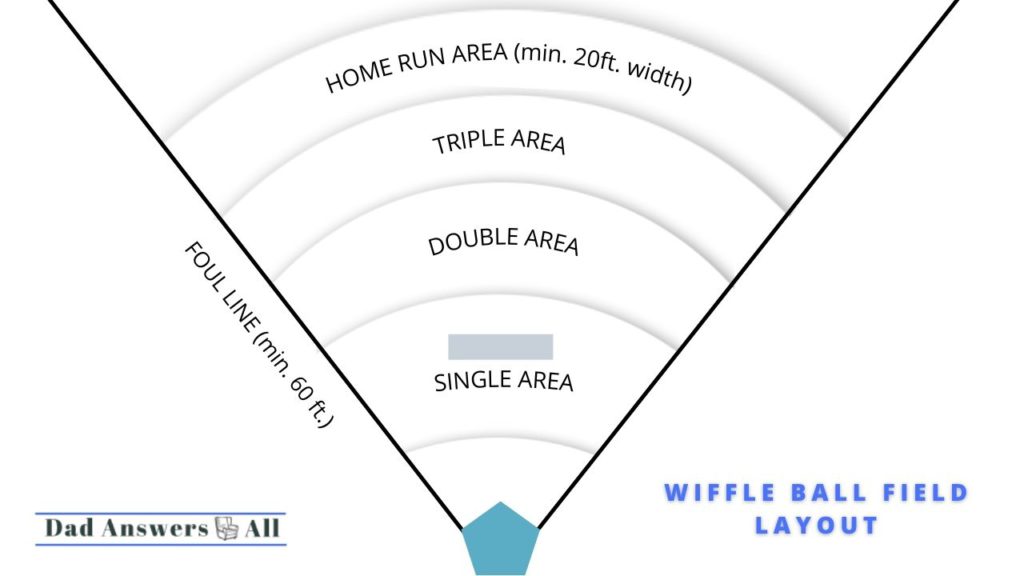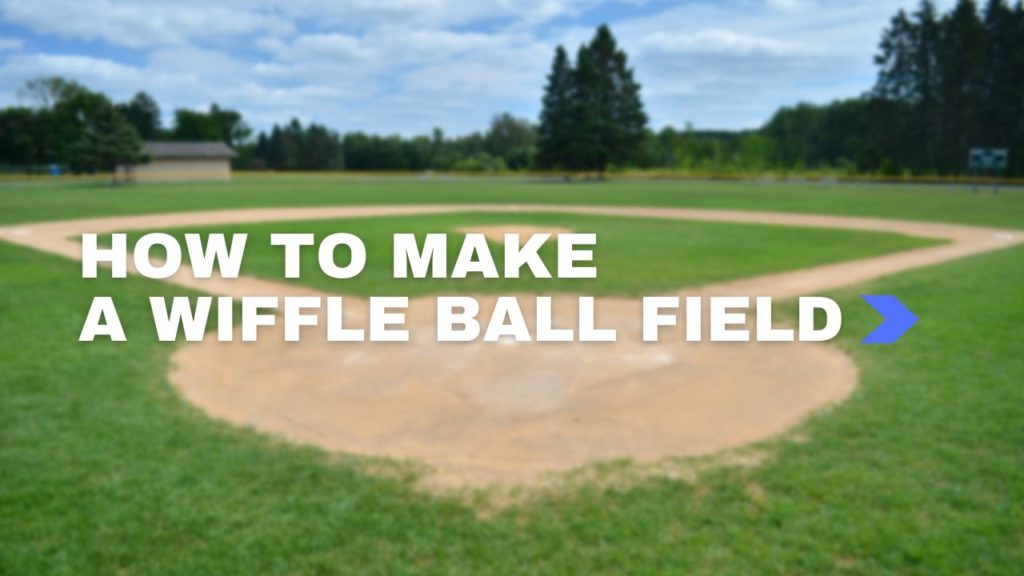A Wiffle ball field may be smaller than a baseball field, but that doesn’t mean you should just wing it. If you want your backyard Wiffle ball field to be fun for you and your family, you need to build it right. Luckily for you, our Wiffle Ball field guide is easy to follow. Plus, all you need is a few tools!
Table of Contents
1. Consider the Location and Site Drainage
You can play a Wiffle ball on virtually any surface type. However, you should choose a flat land area to make the construction of your field easier. The ground should also be well-drained to allow excess water to flow, especially during the rainy season.
Expert Tip: You should also avoid bare soil because it becomes problematic during the rainy season — a wet and muddy area can lead to slipping!
In terms of the width of the field, it can be anything from 40 to 60 feet. But it can also be as large as up to 100 feet. You should work with dimensions based on the available space in your yard. Remember, the size of the field is smaller than a baseball field.
2. Draft a Field Diagram

You should start by drawing your rough diagram before marking the lines in your courtyard. This will enable you to capture as many field details as possible. Again, the total size of the playing field depends on the usable backyard space. However, Wiffle suggests keeping the home run area with at least 20ft. minimum in width. The distance from the home run marker should also be 60ft. long.
3. Get Marking and Measuring Tools

As mentioned earlier, you only need a couple of tools to build a Wiffle ball field in your backyard. Some of the tools required are:
- Chalk or white paint for marking the lines
- Measuring tape
- Home plate
- Pitcher’s plate
- White rubber with black oblique edges for safety
- Fences for boundary
4. Set and Measure the Home Run Area
You should start with measuring the outer boundary of your field, which is the home run area. This is the simplest and the most convenient way to mark. You can use barriers like a wired fence to mark the home run area if you don’t have paint.
The minimum height should be 4-5 feet, while the maximum should be 15-16 feet. The width of the home run should be 20 to 100 feet. This is from the left foul line up to the right foul line.
5. Mark the Foul Lines
You should measure the foul lines all the way from the home run to the home base. Ideally, it should be 60 to 100 feet. You should carefully mark the foul lines, either white paint or chalk.
Expert Tip: The left and right foul lines do not need the same length.
6. Set the Four Zones
You may choose to alter the recommended distances of your foul, single, double, and triple zones. Of course, it entirely depends on the size of your field. As a matter of fact, the zones are marked in the order from the left foul line to the right foul line. You should also include a foul zone all-round the home plate. The approximate distances of the four zones are as follows:
- The foul zone should be between 5 to15 feet away from home plate.
- The single-zone should be between 20 to 45 feet measured on the foul lines.
- The double zone is placed 20 feet past the singles marker.
- Triple zone is marked 20 feet beyond the double zone.
7. Add the Pitcher Area
The pitcher is normally the selected player for a single area. As a result, you may decide on adding the pitcher’s plate. For that reason, the pitcher’s plate should be positioned in a single area.
Expert tip: Wiffle balls can be difficult to throw over long distances. You should select a point in the single zone where the pitcher can easily throw a decent curveball. A pitcher spot at about 30 feet is not all that bad.
8. Set the Batter Box
A batter box is a rectangular box drawn on the field. This is where the batter stands to make a swing at the pitch.
There are two batter boxes on either side of the home plate. The batter can use any of the batter boxes they so wish. Nevertheless, the batter cannot switch the batter box in between the games. So, the batter should always choose the batter box that offers more comfort.
In terms of measurement, the batter box is 4 feet wide and 6 feet long.
9. Add Some Touches
By now, your Wiffle ball playground has all the basics. What remains are a few additions, and you have a fantastic field! To start with, you can erect a plywood fence around your home run boundary. Then, you can put up some equipment and supplies like Wiffle balls and various ball bats.
Below are more additions you can incorporate into your field:
- Scoreboard display
- First, second and third base
- Dugout/bunker
- Foul poles
- Spectator viewing area
Wiffle Ball Field FAQ
How Far Apart Should Wiffle Ball Bases Be?
Wiffle ball bases are normally placed at a distance of 45 feet apart. On the other hand, the pitcher’s rubber is 35 feet from home plate.
How Far Is the Home Run Fence in Wiffle Ball?
The stretch from a home plate to an outfield fence is often 100 feet running along the foul lines. Similarly, the length of the outfield fence measured from foul line to foul line will be 100 feet. And also, all struck balls that clear the outfield fence will be ruled as home runs.
How Much Fence Do I Need for a Wiffle Ball Field?
Typically, the Wiffle ball field fence should range from four to 16 feet high. On the other hand, the home plate to foul poles ranges between 80 and 105 feet.
Are You Ready to Play?
Creating a Wiffle ball field right in your backyard is not as complicated. Once you have the ideal location, it’s just a matter of placing the markers, and you and your family are ready to play!
